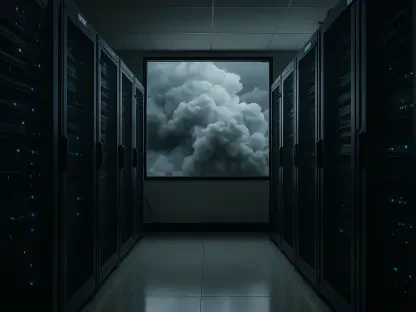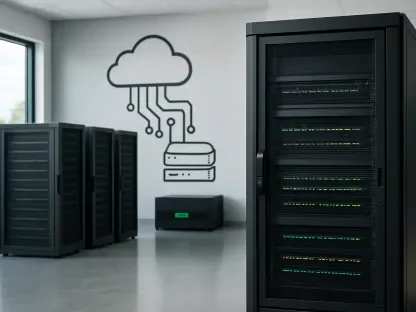In today’s digital age, the incredible convenience of cloud storage has completely transformed the way we archive our precious photos. With an astonishing average of 500GB of data being stored by each person in the cloud, nearly half of which are photos, this practice has become nearly ubiquitous. However, this seemingly harmless and highly convenient habit carries significant financial and environmental implications that many users often overlook. As we delve into the various facets of cloud photo storage, we explore its true costs, underlying impacts, and the future trends that may shape how we manage our digital memories.
The Convenience and Complacency of Cloud Storage
The dramatic shift from physical to digital storage mediums has led to a pervasive sense of complacency among countless users. Brenda Beltrán from Holafly astutely highlights a cognitive dissonance where people become significantly disconnected from the sheer volume of their digital archives. Unlike physical clutter, digital clutter is not tangibly seen, making it much easier to ignore and leave unmanaged. This indifferent approach can be traced back to the early 2000s when storage mediums were physical items like CDs, DVDs, and printed photos—items that people were more likely to dispose of once they outgrew their use.
Today, the breathtaking convenience of cloud storage means that users rarely stop to consider the massive volume of data they accumulate over time. The average person now stores approximately 137,237 pictures, a dramatic increase from a decade ago when people had only hundreds of photos on their phones. This growing overreliance on cloud storage has led to a lack of regular digital clean-up, resulting in digital clutter that continues to expand unchecked. Users often fail to inventory and organize their photo collections, which only perpetuates the cycle of storing unnecessary images without a second thought.
Financial Implications of Cloud Storage
When cloud storage services were first introduced, companies offered remarkably low prices and sometimes even free services. These offerings were heavily subsidized by substantial investments aimed at gaining a large user base. However, as these companies now seek to recoup their investments, consumers should be prepared for consistent increases in storage fees. For example, Apple’s charges for 50GB, 200GB, and 2TB plans have all experienced price hikes, while Amazon Prime offers limited free storage with paid upgrades available for higher storage requirements.
Brenda Beltrán emphasizes that many users will soon find themselves having to choose between “convenience and intentionality,” making tough decisions about what is truly worth storing and paying for. As storage fees continue to rise, consumers may find it necessary to reevaluate their digital content and prioritize what is essential to keep. This financial strain could foster a more mindful approach to data storage, where users become more selective about the photos they decide to retain, thus potentially reducing the volume of unnecessary digital clutter.
The Role of AI in Managing Cloud Storage
Technological advancements suggest that artificial intelligence (AI) will likely play a more active role in managing cloud storage in the near future. Taimur Ijlal, a noted tech expert, posits that AI-driven storage management systems may soon perform the laborious task of cleaning up redundant and less-viewed images on behalf of users. This development could greatly alleviate the burden on users, who often struggle to manage and organize their vast digital archives effectively.
However, the implementation of AI in managing deeply personal data raises significant privacy concerns. Entrusting a machine with access to one’s personal photos can be unsettling for many users, leading to apprehensions about data security and privacy. While AI has the potential to streamline and optimize data management processes, it is crucial to address these privacy concerns and ensure that users feel secure when utilizing such technology. Balancing efficiency with privacy will be an essential challenge as AI integrations become more prevalent in digital storage solutions.
Environmental Impact of Data Storage
The environmental footprint of data storage is a significant and growing concern. Jacob Kalvo, CEO of Live Proxies, underscores the substantial energy consumption of data centers, which are essential for maintaining the vast volumes of digital information we store. These centers rely heavily on electricity, and unless their power is sourced from renewable resources, they significantly contribute to carbon emissions and environmental degradation.
As the volume of digital data continues to grow exponentially, the energy demands of data centers escalate, leading to a further increase in electricity consumption and associated costs. This heightened reliance on non-renewable energy sources exacerbates the environmental impact. In turn, the financial burden on both data centers and consumers rises as electricity costs surge. This situation underscores the urgency of adopting more sustainable practices in data storage, such as utilizing renewable energy sources and improving energy efficiency within data centers to mitigate their environmental toll.
A Call for Mindful Data Storage
In today’s digital age, the incredible convenience of cloud storage has drastically transformed how we archive our valuable photos. With each person on average storing around 500GB of data in the cloud, nearly half of which are photos, this practice has become nearly ubiquitous. However, this seemingly harmless and highly convenient habit carries significant financial and environmental implications that many users often overlook.
The reliance on cloud storage means users face recurring costs for extra storage plans, often not realizing how these small amounts add up over time. Moreover, the servers that store our data consume vast amounts of electricity, contributing to carbon emissions and environmental degradation.
As we delve into cloud photo storage’s various facets, we explore its true costs, underlying impacts, and future trends that may shape how we manage our digital memories efficiently and sustainably. It’s crucial to stay informed about these hidden costs and impacts, ensuring we balance convenience with financial and environmental responsibility.









